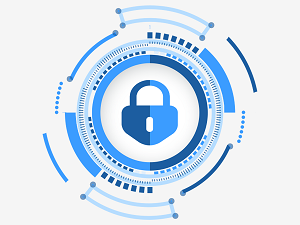Next-Generation Firewalls (NGFWs) are advanced network security devices that provide enhanced capabilities beyond traditional firewalls. NGFWs incorporate various security features and technologies to protect networks from a wide range of cyber threats. Let’s explore the methods, examples, and considerations of Next-Generation Firewalls in maximum detail:
Methods of Next-Generation Firewalls:
- Deep Packet Inspection (DPI): NGFWs use DPI to analyze the content of network packets in real-time. This technique allows NGFWs to inspect and identify application protocols, user activities, and even detect advanced threats hidden within the packets.
- Application Awareness: NGFWs possess a deep understanding of network applications, allowing them to enforce granular policies based on application types, user identities, and specific activities. This enables organizations to control and secure network traffic based on the context of applications rather than just port numbers.
- Intrusion Prevention System (IPS): NGFWs often incorporate IPS capabilities to detect and prevent various types of network attacks. By inspecting packet payloads and comparing them against known attack signatures or behavioral patterns, NGFWs can proactively block malicious traffic.
- VPN and Secure Sockets Layer (SSL) Inspection: NGFWs can provide secure remote access through Virtual Private Network (VPN) connectivity. Additionally, they can inspect SSL-encrypted traffic to identify potential threats or policy violations within encrypted communications.
- Web Filtering and Content Filtering: NGFWs often include web filtering and content filtering capabilities. They can block access to malicious or inappropriate websites, restrict certain content types, and enforce acceptable use policies to maintain a secure and productive network environment.
Examples of Next-Generation Firewalls:
- Palo Alto Networks: Palo Alto Networks offers a range of NGFW solutions, such as the Palo Alto Networks PA-Series firewalls. These firewalls combine advanced threat prevention features with application awareness, user identification, and centralized management capabilities.
- Cisco Firepower: Cisco Firepower NGFWs provide integrated security features, including IPS, URL filtering, and advanced malware protection. They offer advanced threat intelligence and automation capabilities to detect and mitigate sophisticated attacks.
- Fortinet FortiGate: Fortinet’s FortiGate NGFWs provide a comprehensive security platform, integrating various security technologies such as IPS, VPN, SSL inspection, and advanced threat protection. They offer centralized management and advanced analytics for enhanced visibility and control.
- Check Point Next Generation Firewalls: Check Point NGFWs provide unified threat management capabilities, including IPS, application control, URL filtering, and SSL inspection. They leverage threat intelligence to proactively identify and block emerging threats.
Considerations for Next-Generation Firewalls:
- Performance: NGFWs should be able to handle the network traffic volume without introducing significant latency or impacting network performance. Considerations such as throughput, connection capacity, and concurrent sessions are important when selecting an NGFW.
- Scalability: NGFWs should be capable of scaling to accommodate growing network requirements, such as increased traffic, additional users, or expanding network infrastructure.
- Management and Reporting: Centralized management and reporting capabilities are crucial for effectively managing and monitoring NGFW deployments. These features enable administrators to configure policies, track security events, and generate reports for compliance purposes.
- Integration and Compatibility: NGFWs should seamlessly integrate with existing network infrastructure and security solutions. Compatibility with industry-standard protocols, APIs, and security management platforms ensures smooth integration and interoperability.
- Threat Intelligence and Updates: Regular updates to threat intelligence, security signatures, and software patches are essential to keep NGFWs up-to-date and capable of detecting emerging threats.
Next-Generation Firewalls play a vital role in protecting networks from advanced cyber threats, providing advanced security features beyond traditional firewalls. Implementing NGFWs requires careful planning,
